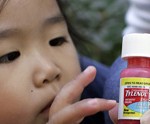 Gotta love a story like this: Vetran Umpire Jim Joyce Makes His Biggest Call Of The Season
Gotta love a story like this: Vetran Umpire Jim Joyce Makes His Biggest Call Of The Season
By Scott Miller | Senior Baseball Columnist
You never know when the big moments will arrive, and so it was that veteran umpire Jim Joyce made his biggest call of the season … roughly 90 minutes before the Marlins-Diamondbacks game started in Arizona on Monday night.
Joyce administered CPR to a Diamondbacks’ game-day employee named Jayne Powers in a tunnel leading to the umpires’ dressing room minutes on his way into the ballpark Monday, saving her life in a moment nobody who was in the vicinity at Chase Field will soon forget.
Talk about making the right call in a split-second.
“It was non-normal,” Joyce told CBSSports.com Tuesday afternoon. “I don’t know what word to put on it.
“It’s obviously never happened to me before.”
“We’re thrilled that she’s doing well today,” Russ Amaral, vice-president for Chase Field operations and facilities management, said. “And we’re grateful to those who were there to help.”
Powers, a beloved, original employee dating back to the franchise’s inception, has worked in concessions for the Diamondbacks since March 1, 1998. She remains in the hospital and hopes to be released by week’s end, according to the Diamondbacks.
Joyce, 56, and the other umpires in his crew — Lance Barrett, Jim Reynolds and James Hoye — had just arrived at Chase Field and were headed to their dressing room when they saw a woman down in the midst of having a seizure. Noting that, Joyce, who learned CPR when he was in high school, made sure that the woman’s head was protected. But shortly afterward, her body relaxed and Joyce knew something was wrong.
“I’ve had to use CPR before,” Joyce said, though not in many years. “This is something everybody should know. Everybody should know what to do in a circumstance like that.
“It’s not a hard thing. You don’t need a degree. It’s very simple, and very easy.”
Paramedics arrived while Joyce was administering CPR, but even after an initial shock from a defibrillator, Powers did not come out of it. So Joyce continued administering CPR while the paramedics did another round with the defibrillator.
Finally, Powers began breathing again. Someone told Joyce later Monday night that she went out again in the ambulance and that paramedics again used the defibrillator. But by later that night, when he came back into the umpires’ room following the game, Joyce’s understanding was that Powers’ condition in the hospital was stable.
“I’m going to find out more, hopefully she’s doing OK,” said Joyce, who was waiting for an update Tuesday.
Joyce, who was in the national spotlight in 2010 when he missed the call at first base that prevented the Tigers’ Armando Galarraga from completing a perfect game against the Indians, was scheduled to work home plate Monday night.
After the emotions of the moment, his colleagues suggested a swap that would move him to third base. Joyce declined.
“It was very emotional, I’ll be honest with you,” he said. “But I didn’t want to go to third base because just standing there, literally, [the incident] is all I would have thought about all night. I wouldn’t have been able to think about anything else.
“Going behind the plate, I would have something to do every minute. I could just do my job. But I’ll be honest with you, there were still times during the game that I was thinking about it.”
The Marlins clobbered the Diamondbacks 12-3, and it was a fairly routine game for Joyce behind the plate. There were no controversies.
Turns out, not only did Joyce long ago learn CPR, but his daughter currently is in EMT school and his son, a coach back home in Beaverton, Ore., is certified in CPR.
“Just knowing it, I think it’s imperative,” Joyce said. “You may never, ever, have to use it.
“But it’s just that one time that you do.”
First Response’s Comments:
When you read this story ‘Vetran Umpire Jim Joyce Makes His Biggest Call Of The Season’ it makes you realise how quickly things can happen, and how from one minute to the next, the world around you as you know it can change. Being ready, with regard to having some kind of First Aid and CPR training is what can sometimes make the difference between the patient returning to meaningful life or not. I try to impress on my students how important it is to do something, rather than stand by and do nothing. We never know the ripple effect of consequences our actions may have on a persons or their family’s life. I salute ‘Vetran Umpire Jim Joyce Makes His Biggest Call Of The Season’! Well done Jim Joyce!

